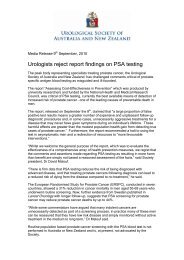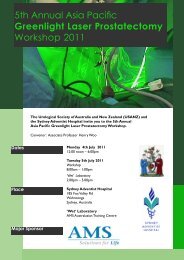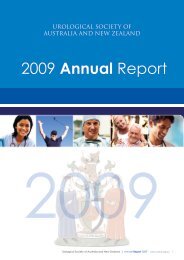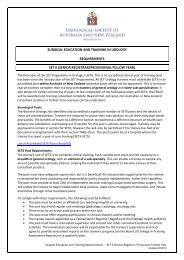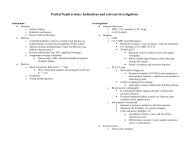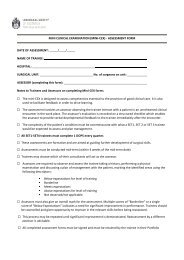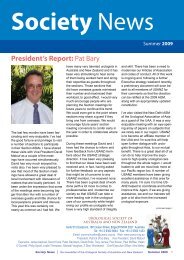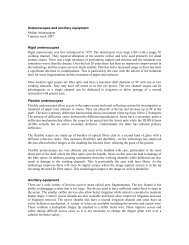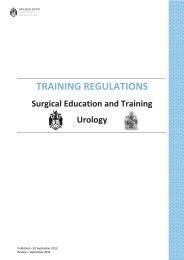CIRCUMCISION OF INFANT MALES
CIRCUMCISION OF INFANT MALES
CIRCUMCISION OF INFANT MALES
Create successful ePaper yourself
Turn your PDF publications into a flip-book with our unique Google optimized e-Paper software.
PENILE CANCER & PROSTATE CANCER<br />
Cancer of the penis is extremely rare with an incidence of 1 in 250,000 Australian<br />
men.[104, 105] The increased risk of cancer of the penis in uncircumcised men is strongly<br />
associated with phimosis. A number of other factors including genital warts, smoking, past<br />
sexually transmitted diseases, sexual relationship outside marriage, multiple sexual<br />
partners, poor genital hygiene, previous genital conditions, penile rash (lasting longer than<br />
1 month) or penile tear have all been identified as risk factors.[106-109] (Level 2+) A<br />
Danish study has shown decreasing prevalence of penile carcinoma from 1.15 per<br />
100,000 person years in 1943-7 to 0.8 per 100,000 person years in 1988-90 and given the<br />
low and constant circumcision rates (2.3%), researchers have attributed the fall to<br />
improved sanitary installations and associated penile hygiene.[110]<br />
Prostate cancer is the most common cancer diagnosed among Australian men with an<br />
incidence of 1 in 700.[104] Several reports have suggested a link between circumcision<br />
and a lower risk of prostate cancer.[111, 112] This association has not been consistent and<br />
more recent reviews have failed to confirm it.[113-115] (Level 2+)<br />
SUMMARY <strong>OF</strong> PROTECTIVE BENEFITS <strong>OF</strong> <strong>CIRCUMCISION</strong><br />
Circumcision provides some benefit in preventing UTI in boys, particularly in those with<br />
underlying anatomical anomalies of the urogenital tract.<br />
In low prevalence populations such as Australia and New Zealand circumcision does not<br />
provide significant protection against STIs and HIV, and is less effective than safe sex<br />
practices.<br />
Circumcision decreases the risk of penile cancer probably by preventing phimosis.<br />
Circumcision may offer protection against development of cervical cancer in high risk<br />
populations, but is overshadowed as a protective measure by HPV vaccines. Circumcision<br />
has not been demonstrated to decrease the risks of prostate cancer.<br />
LEGAL STATUS <strong>OF</strong> <strong>INFANT</strong> <strong>CIRCUMCISION</strong><br />
Circumcision of males is legal in Australia, New Zealand, the UK, USA and Canada.<br />
However, routine neonatal circumcision has been declared unlawful in South Africa,<br />
Sweden (except on religious grounds) and Finland.<br />
New Zealand health practitioners who perform the procedure are covered by a number of<br />
laws and regulations. Circumcision is defined as a restricted activity under the Health<br />
Practitioners Competency Assurance Act (2003).[116] This means that the procedure is<br />
only to be performed by a medical practitioner. The legal acceptance in Australia & New<br />
Zealand is based on clearly established rights of parents to make decisions about medical<br />
treatment for their children. Society may however decide to place limitations on the scope<br />
of such parental choices if significant harm results from such choices.<br />
13



